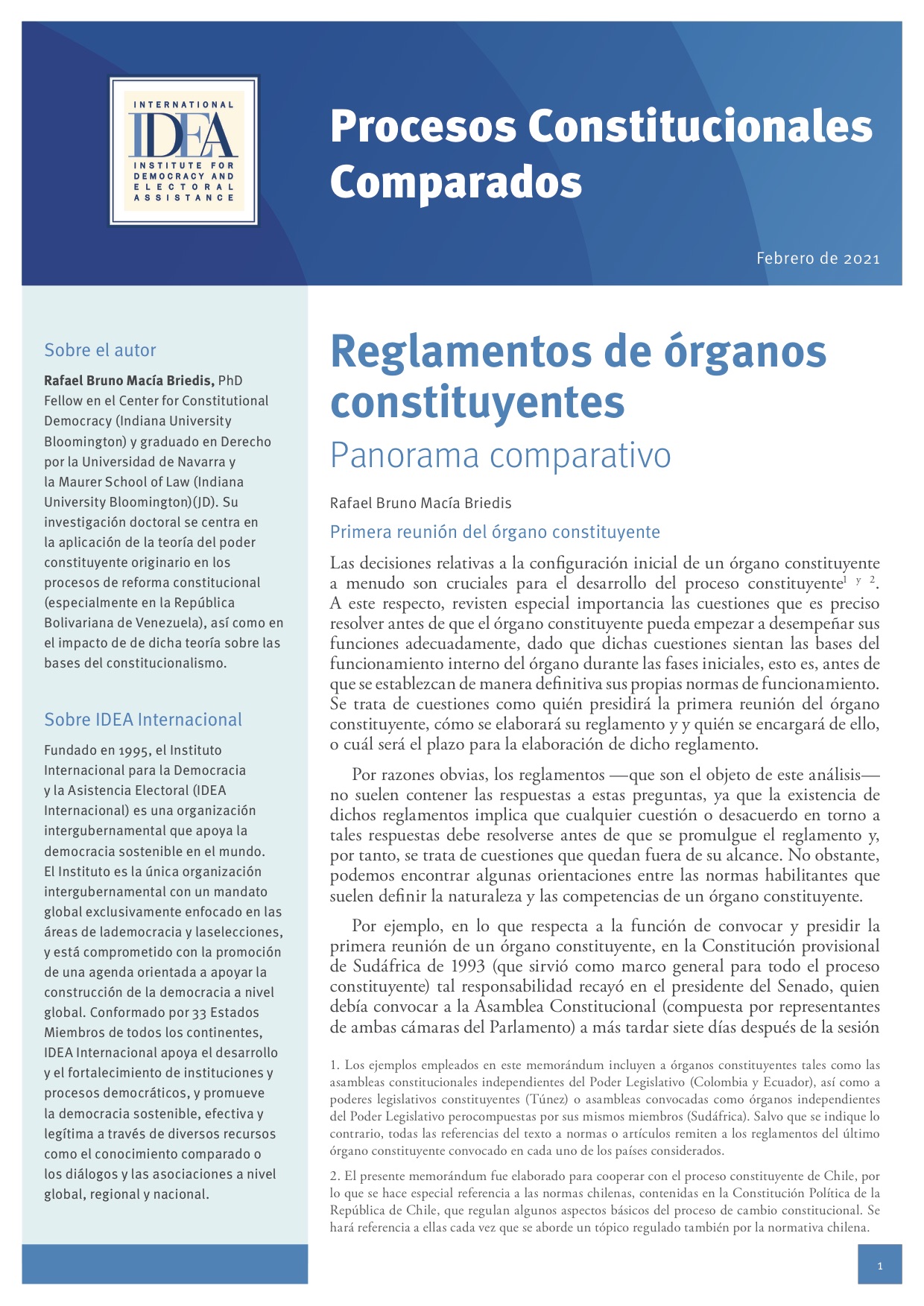Reglamentos de Órganos Constituyentes - Panorama Comparativo: Procesos Constitucionales Comparados

In any constitutional reform process, one of the most crucial elements is the type of institution responsible for constitutional drafting, both for constitutional drafting and adoption. However, every institution responsible for constitutional drafting, or constituent body, be it larger or smaller, elected, appointed or mixed, must have rules that regulate its operation. These rules must be outlined with particular care as they determine the decision-making process, the role, functions and powers of both the president and vice-presidents, the calendar and meeting places, the requirements that may exist in relation to the quorum, committee structure,
This Guide to Comparative Constitutional Processes, written in order to support the Chilean constitutional drafting process (2021-22), sheds light on the content of the regulations from a comparative perspective. It begins by describing the types of decisions that must be made at the first meeting of the constituent body, including precisely how other constituent bodies have decided on their bylaws. It further describes some of the key elements that delegates from different constituent bodies should take into account when negotiating and drafting their own bylaws, as well as some innovations in terms of constitutional design to overcome the challenges that constitution makers may have to face.